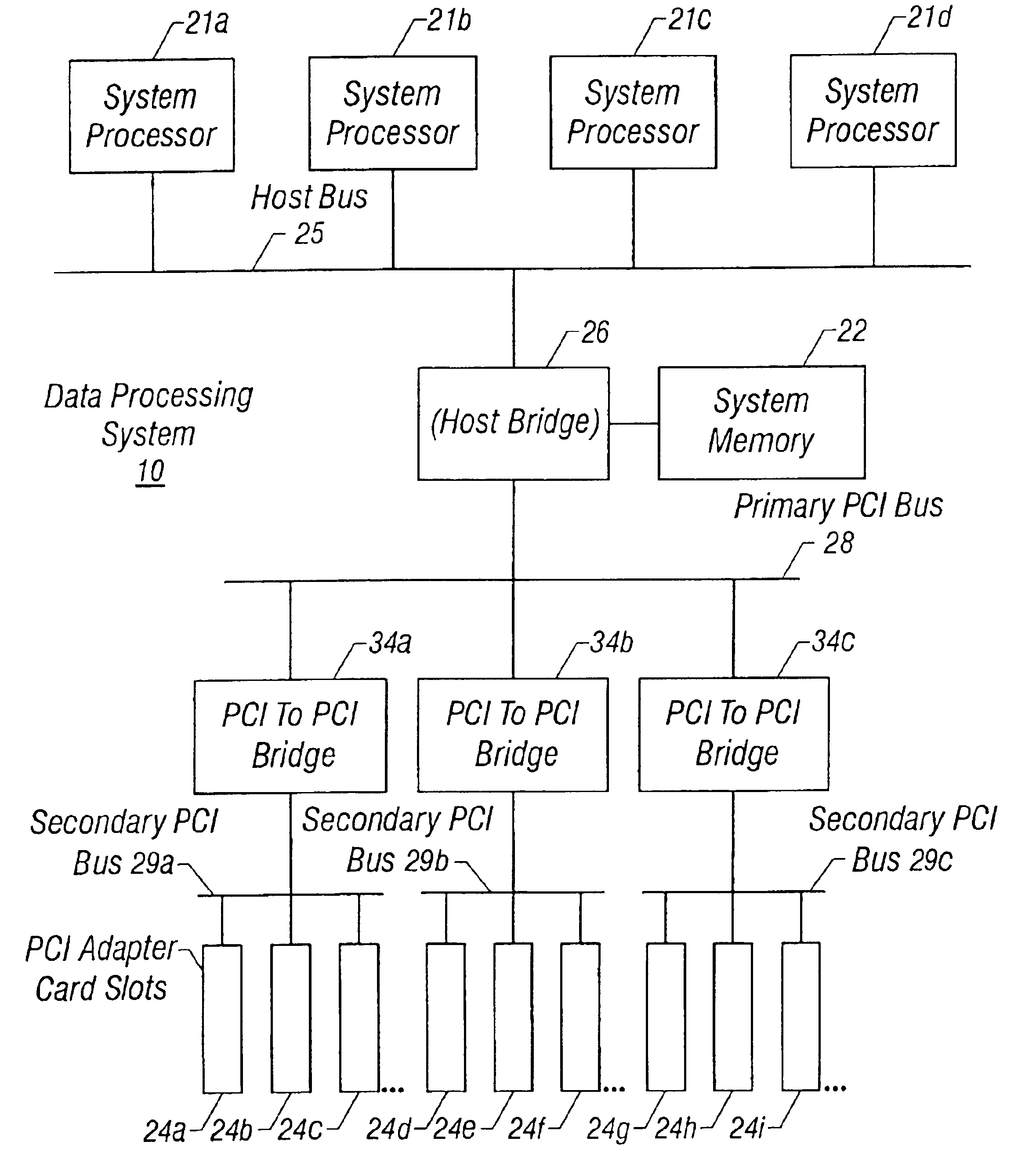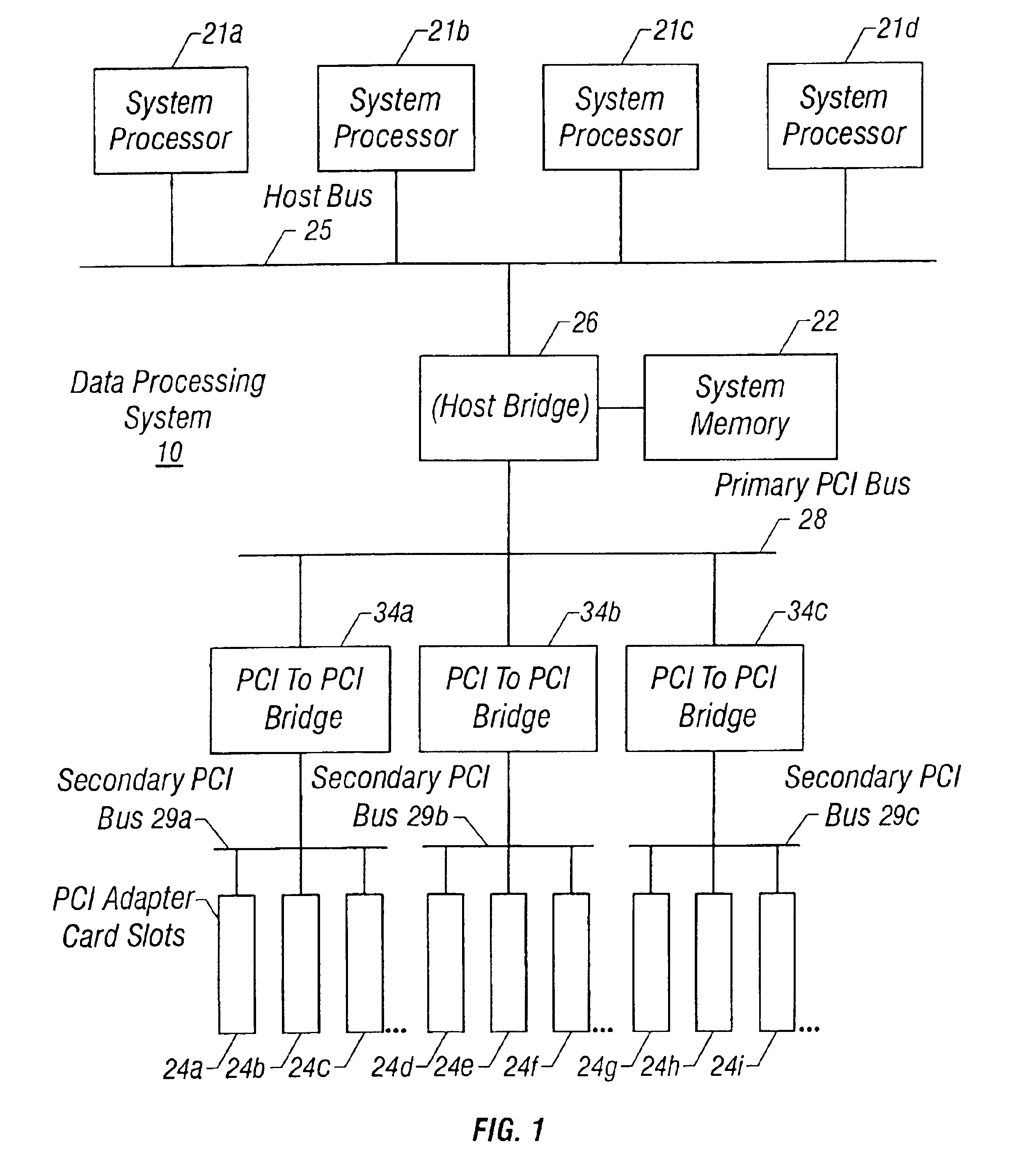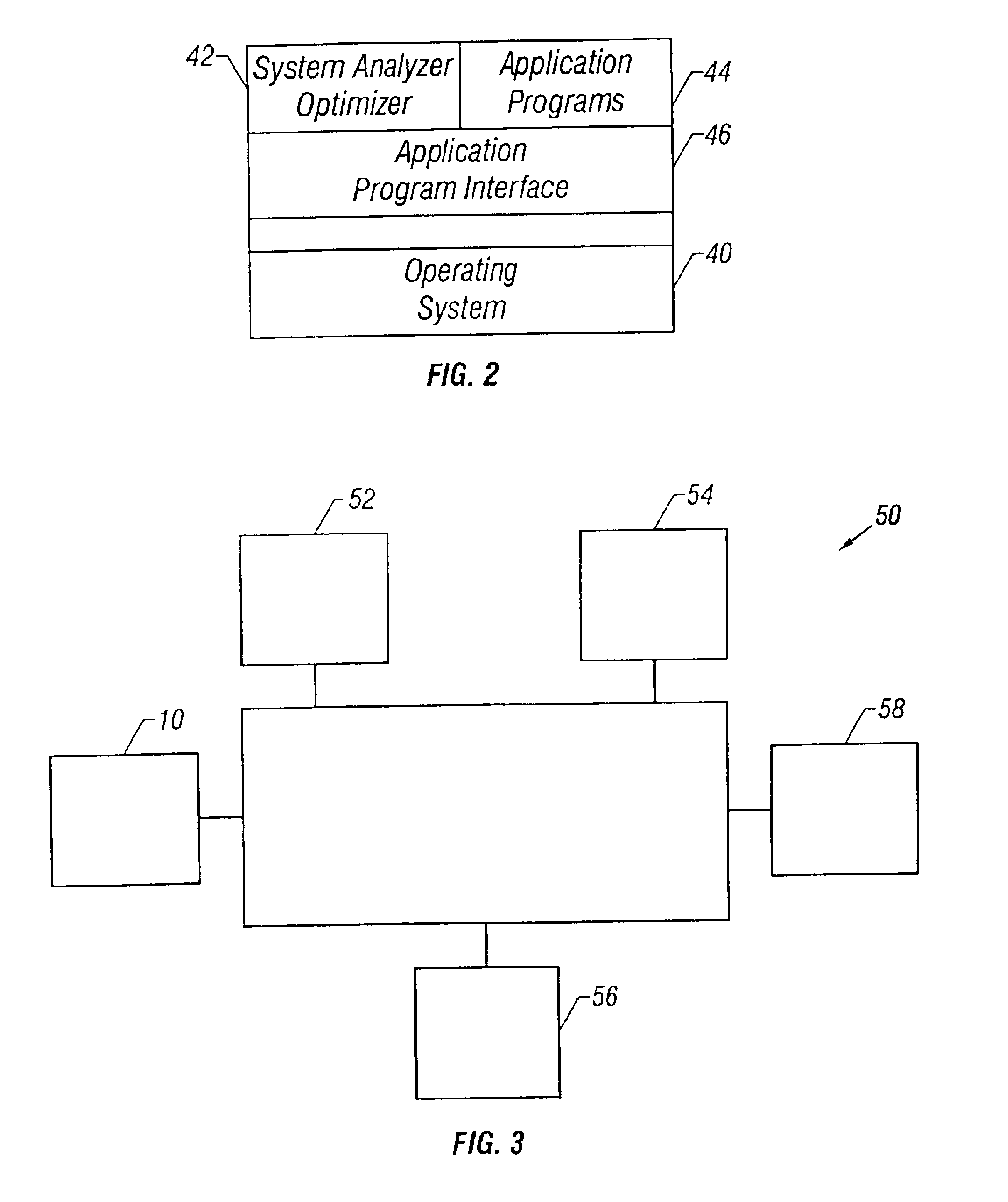System and method for analyzing and optimizing computer system performance utilizing observed time performance measures
- Summary
- Abstract
- Description
- Claims
- Application Information
AI Technical Summary
Benefits of technology
Problems solved by technology
Method used
Image
Examples
Embodiment Construction
[0035]With reference now to the figures, and in particular, with reference to FIG. 1, there is depicted a block diagram of an exemplary data processing system 10 in which a preferred embodiment of the present invention may be implemented. As illustrated, data processing system 10 includes one or more system processor(s) 21a-21d and input / output (I / O) host bridge 26, herein referred to as “host bridge 26,” coupled by a first interconnect (host bus) 25. System processor(s) 21a-21d, implemented as any generation of Pentium™ processor available from Intel Corporation in Santa Clara, Calif., are coupled to host bus 25 and execute software instructions to control the operation of data processing system 10. Host bridge 26 couples system memory 22 and a primary peripheral component interconnect (PCI) bus 28 to both host bus 25 and system processor(s) 21a-21d. System memory 22, coupled to host bridge 26 and provides storage for software and data, may include both read-only memory (ROM) and r...
PUM
 Login to View More
Login to View More Abstract
Description
Claims
Application Information
 Login to View More
Login to View More - R&D
- Intellectual Property
- Life Sciences
- Materials
- Tech Scout
- Unparalleled Data Quality
- Higher Quality Content
- 60% Fewer Hallucinations
Browse by: Latest US Patents, China's latest patents, Technical Efficacy Thesaurus, Application Domain, Technology Topic, Popular Technical Reports.
© 2025 PatSnap. All rights reserved.Legal|Privacy policy|Modern Slavery Act Transparency Statement|Sitemap|About US| Contact US: help@patsnap.com



